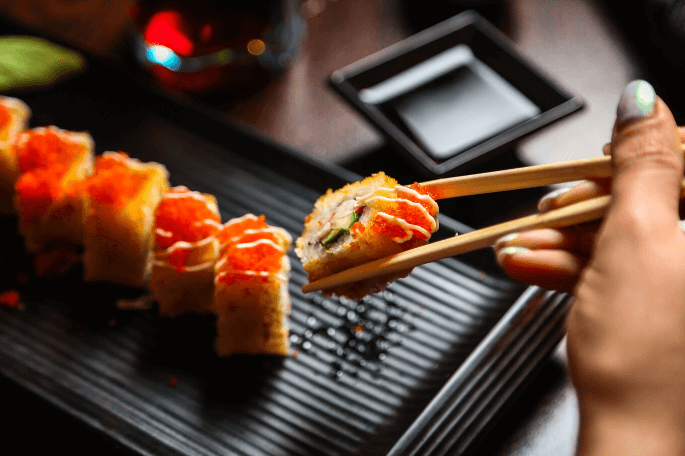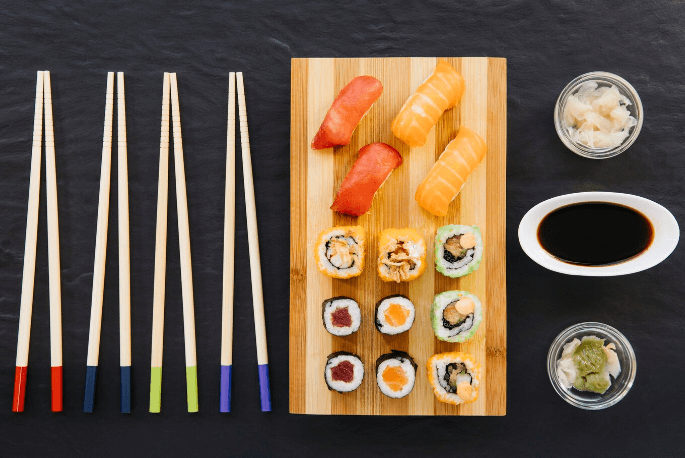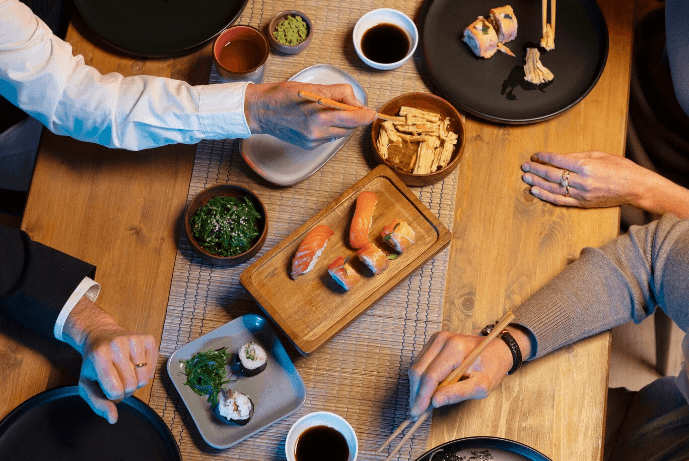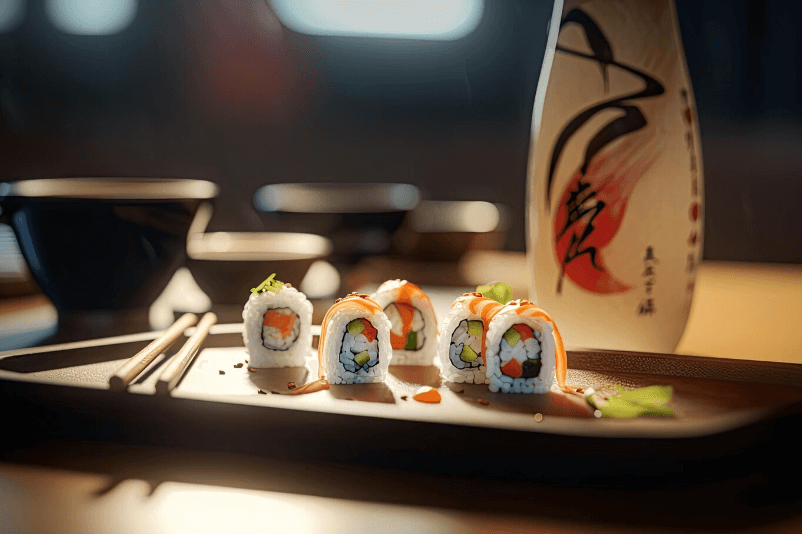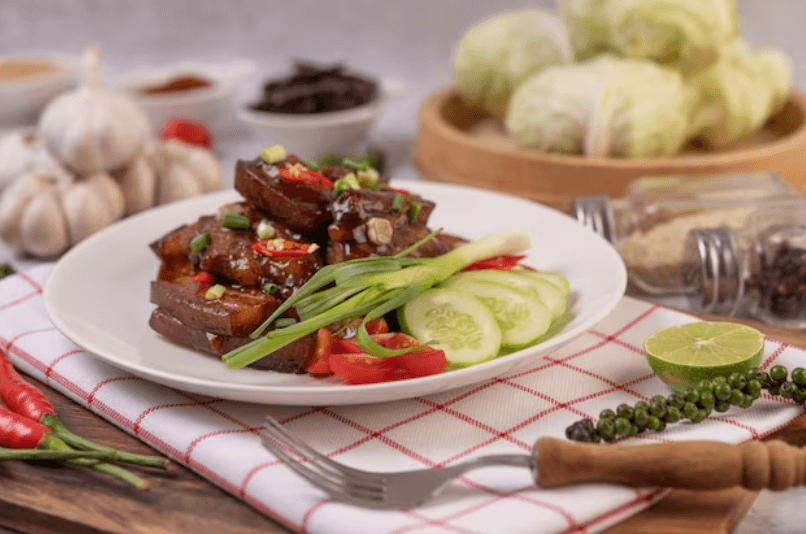Top 5 Famous Whole Food Sushi Rolls Calories & Nutrition

Are you a sushi lover who is always on the lookout for healthy and delicious options? Look no further! Whole food sushi rolls are the perfect choice for those who want to enjoy their favorite Japanese dish without compromising on nutrition. Made with fresh, wholesome ingredients, these rolls pack a punch of flavor while providing your body with essential nutrients. In this blog post, we’ll explore the nutritional components of sushi and dive into the top 5 famous whole food sushi rolls along with their calories and nutrition information. Get ready to tantalize your taste buds while nourishing your body!
What Makes Whole Food Sushi Rolls Unique?
There is no denying that sushi has become a beloved cuisine around the world. From traditional nigiri to creative rolls, there are countless variations of this Japanese dish. However, when it comes to whole food sushi rolls, they stand out for their unique approach to ingredients and nutrition.
Firstly, whole food sushi rolls prioritize using natural and unprocessed ingredients in their fillings. This means you can expect fresh vegetables like cucumber or avocado rather than artificially flavored sauces or processed meats.
Secondly, these rolls often incorporate healthy grains like brown rice or quinoa instead of refined white rice commonly used in traditional sushi. These grains offer higher nutritional value with more fiber and vitamins.
Whole food sushi rolls also tend to be lower in calories compared to other types of sushi due to their focus on wholesome ingredients rather than excess amounts of mayonnaise or fried toppings.
The emphasis on nutrient-dense ingredients makes whole food sushi an excellent option for those seeking a healthier take on this delicious cuisine.
Nutritional Components of Sushi
Sushi is often considered a healthy food option due to its use of fresh ingredients and minimal cooking methods. However, the nutritional profile of sushi can vary greatly depending on the type and ingredients used in each roll.
A basic sushi roll typically includes carbohydrates from rice, protein from fish or vegetables, fat from avocado or mayonnaise-based sauces, and vitamins/minerals from various ingredients like seaweed and vegetables.
The type of fish used in sushi can also affect the nutritional value. For example, fatty fish like salmon contain heart-healthy omega-3 fatty acids while tuna provides high amounts of protein.
Additionally, some rolls may be higher in calories due to added sauces or deep-fried ingredients like tempura shrimp. It’s important to consider portion sizes and limit intake of these types of rolls if you are watching your calorie intake.
Sushi can provide a well-rounded mix of nutrients when made with fresh whole food ingredients. As with any food choice, it’s important to be aware of portion sizes and choose wisely based on individual dietary needs.
Basic nutritional components of a sushi roll: carbohydrates, proteins, fats, and vitamins/minerals.
When it comes to the nutritional components of a sushi roll, there are four main categories: carbohydrates, proteins, fats, and vitamins/minerals. Each plays an important role in our bodies and contributes to overall health.
Carbohydrates are found in the rice used in sushi rolls. They provide energy for our bodies and help with brain function. However, it’s important to note that not all carbs are created equal – refined carbohydrates like white rice can cause blood sugar spikes while whole grain options offer more sustained energy.
Proteins come from the fish or other fillings in a sushi roll. These building blocks of muscle also contribute to healthy skin, hair, and nails.
Fats can be found in both the fish and avocado often used in sushi rolls. While some people may shy away from dietary fat as unhealthy, unsaturated fats like those found in seafood and avocados actually have many health benefits such as reducing inflammation.
Vitamins and minerals play an essential role in keeping our bodies functioning properly. Seafood is rich in micronutrients such as vitamin D and omega-3 fatty acids while vegetables like cucumber or carrot add fiber along with vitamins A & C.
When enjoyed mindfully with fresh ingredients prepared properly by experienced chefs using quality ingredients every component of a sushi roll can contribute positively towards your overall diet!
Top 5 Whole Food Sushi Rolls: Calories & Nutrition
Sushi rolls come in a variety of flavors and ingredients, but it’s important to choose whole food options that are packed with nutritional value. Here are the top 5 whole food sushi rolls you should try, along with their calorie and nutrition information.
First up is the California Roll, which contains imitation crab meat, avocado, cucumber, and seaweed wrapped around sushi rice. This roll typically has around 255 calories per serving and provides a good source of fiber from the vegetables.
The Spicy Tuna Roll is another popular choice that packs some heat. Made with raw tuna, chili sauce or Sriracha mayo, avocado, cucumber, and sometimes tobiko (flying fish roe), this roll has about 290 calories per serving. It’s also high in protein from the tuna.
For vegetarians or those looking for a lighter option, the Veggie Roll is filled with carrots, cucumbers, bell peppers and avocados. This colorful roll usually has around 170 calories per serving while providing plenty of vitamins A & C from its vegetable filling.
Dragon Rolls are made by layering eel on top of an inside-out shrimp tempura roll topped with slices of ripe avocado. Though slightly higher in fat content due to eel’s healthy Omega-3 fatty acids profile; this fusion roll offers around 300-340 Calories/serving size along with other macronutrients like carbohydrates (~53g), Proteins(~11g) etc..
Lastly comes Rainbow Roll– one big delicious bite full of different types fish such as salmon,tuna,yellowtail layered on top an inside-out California Roll coated in flying-fish roe(tobiko). With approximatedly ~476 kcal/serving size ,this vibrant-colored dish delivers significant amounts of monounsaturated fats(Omega-3/6/9) apart from low-glycemic carbs(46 gms), proteins(18 gms), vitamins, and minerals.
Incorporate these whole food sushi rolls in your
California Roll – Detailed overview of its ingredients, nutritional values, and calories.
The California Roll is one of the most popular sushi rolls in America. It’s made with crab meat, avocado, and cucumber. The roll is then wrapped in nori seaweed and sushi rice.
This sushi roll has a moderate amount of calories compared to other sushi options. One serving typically contains around 255-300 calories per roll. However, it’s important to note that this can vary depending on the size of the roll and any additional ingredients added.
In terms of nutritional value, the California Roll provides a good source of protein from the crab meat and healthy fats from the avocado. Additionally, cucumbers are a great source of hydration as they contain mostly water.
It’s also worth noting that some variations may include imitation crab meat instead of real crab meat which can affect its overall nutritional value.
If you’re looking for an option that is relatively low in calories while still providing necessary nutrients such as protein and healthy fats, then the California Roll could be a great choice for your next sushi order!
Spicy Tuna Roll – Detailed overview of its ingredients, nutritional values, and calories.
The Spicy Tuna Roll is a popular sushi roll that’s packed with flavor. It typically consists of rice, seaweed, spicy tuna mix (made from raw tuna and chili sauce), and sometimes additional ingredients like avocado or cucumber.
In terms of nutrition, the Spicy Tuna Roll is a good source of protein thanks to the raw tuna. However, it’s also high in calories due to its rice content. On average, one roll contains around 290-350 calories.
If you’re looking to make your Spicy Tuna Roll healthier, consider swapping out white rice for brown rice or cauliflower rice. You can also ask for less filling inside the roll to reduce calorie intake.
But overall, if you’re looking for a delicious way to get some protein into your diet while indulging in some spice – the Spicy Tuna Roll might just be perfect for you!
Veggie Roll – Detailed overview of its ingredients, nutritional values, and calories.
The Veggie Roll is a popular sushi roll for vegetarians and those who want to keep their sushi rolls light on calories. Unlike other sushi rolls that contain fish, the Veggie Roll is filled with various vegetables like cucumber, avocado, carrot, and bell pepper.
Cucumber provides hydration and dietary fiber while avocado adds healthy fats that are good for the heart. Carrots are rich in beta-carotene which helps improve eyesight and supports skin health. Bell peppers also add color to the roll while providing antioxidants.
Since it does not contain raw fish or any meat-based ingredients, the calorie content of a Veggie Roll is relatively low compared to other sushi rolls making it an ideal option for people trying to lose weight or maintain a healthy lifestyle.
A typical serving size of six pieces of Veggie Roll contains around 170-200 calories on average depending on its fillings and type of rice used. It also has less fat content than most traditional sushi rolls.
If you’re looking for a healthier option when indulging in your love for Japanese cuisine, consider trying out a delicious veggie roll!
Dragon Roll – Detailed overview of its ingredients, nutritional values, and calories.
The Dragon Roll is one of the most popular sushi rolls in Japanese cuisine. It was first created in America, but soon became a global sensation. This roll is typically made with eel and avocado, which are then wrapped in nori (seaweed) and rice.
Eel is rich in omega-3 fatty acids that promote heart health, brain function, and joint mobility. Avocado contains healthy fats that help lower bad cholesterol levels while increasing good cholesterol levels.
Additionally, this roll is often topped with slices of fresh avocado or unagi sauce to enhance its flavor profile. Although deliciously tempting, it’s important to keep an eye on your portions as dragon rolls can be high in calories due to their use of sauces and fried ingredients.
A typical dragon roll has approximately 250-300 calories per serving size along with carbohydrates, proteins,and vitamins/minerals like iron,vitamin C etc.
The nutritional value may vary depending on the preparation method used by different chefs.
If you’re looking for a sushi option that offers both taste and nutrition, the Dragon Roll should definitely be on your list!
Rainbow Roll – Detailed overview of its ingredients, nutritional values, and calories.
The Rainbow Roll is a colorful and delicious sushi roll that features an array of seafood. It typically has crab meat, avocado, cucumber, and shrimp tempura as fillings. The outside of the roll is then covered in thinly sliced pieces of salmon, tuna, yellowtail, and sometimes even eel.
This sushi roll is not only visually stunning but also packed with nutrients. The crab provides protein while the avocado offers healthy fats. Cucumber adds a refreshing crunch to the dish while shrimp tempura brings in some carbs.
In terms of calories and nutrition, a standard Rainbow Roll can vary depending on its size and specific ingredients used by each restaurant or chef. However, on average it contains around 476 calories per serving size (8 pieces).
One thing to keep in mind when enjoying this beautiful creation is that because it’s often topped with multiple types of fish which can increase mercury levels if consumed excessively. So be sure to enjoy it in moderation along with other varied food choices for a balanced diet!
Tips for Enjoying Sushi Healthily
When it comes to sushi, there are ways to enjoy it healthily without compromising on taste. Here are a few tips:
1. Choose brown rice: Most sushi rolls come with white rice, but opting for brown rice can add more fiber and nutrients to your meal.
2. Go light on the soy sauce: Soy sauce is high in sodium, so try using less or ask for low-sodium soy sauce instead.
3. Avoid fried options: Tempura rolls may be tempting, but they’re also deep-fried and loaded with calories. Stick to fresh or grilled options instead.
4. Add some seaweed salad: Seaweed salad is rich in vitamins and minerals such as iodine and calcium while being low in calories.
5. Load up on veggies: Sushi rolls filled with vegetables like avocado, cucumber, carrot, and bell pepper make for a healthy choice packed with nutrients.
6. Watch portion sizes: It’s easy to go overboard when enjoying delicious sushi rolls! Keep portions reasonable by sharing dishes or ordering smaller servings.
By following these simple tips when enjoying your favorite whole food sushi roll options like California Roll or Rainbow Roll – you can indulge guilt-free while still maintaining a healthy diet!
Conclusion
Sushi can be a healthy and delicious meal option if you choose the right rolls. Whole food sushi rolls are an excellent choice because they contain nutrient-dense ingredients that provide your body with essential vitamins and minerals while keeping the calorie count low.
The California Roll, Spicy Tuna Roll, Veggie Roll, Dragon Roll, and Rainbow Roll are all great options to try when ordering whole food sushi rolls. Just remember to watch out for high-calorie sauces like mayonnaise or cream cheese.
By choosing whole food sushi rolls and being mindful of portion sizes, you can enjoy this Japanese staple without feeling guilty about indulging in something unhealthy. So next time you’re craving sushi, try one of these five famous whole food sushi rolls for a nutritious meal that won’t compromise on taste!
